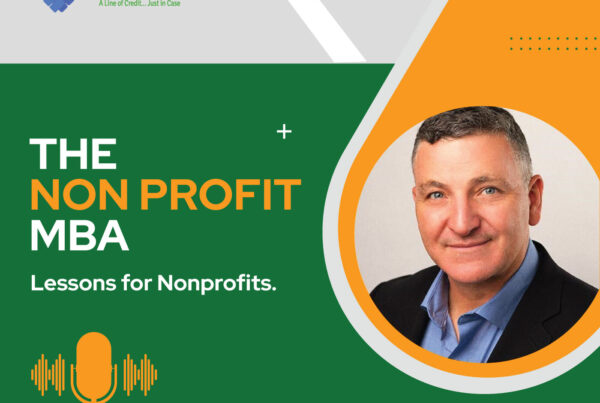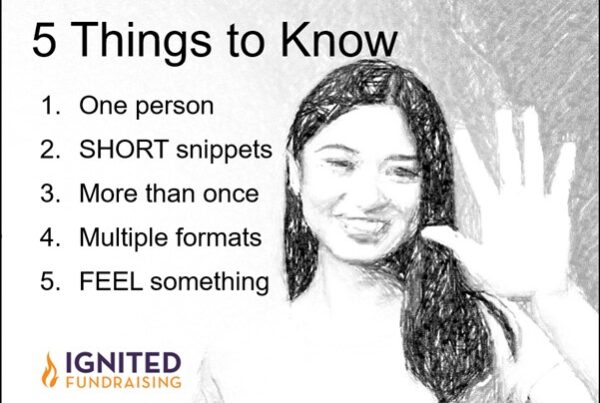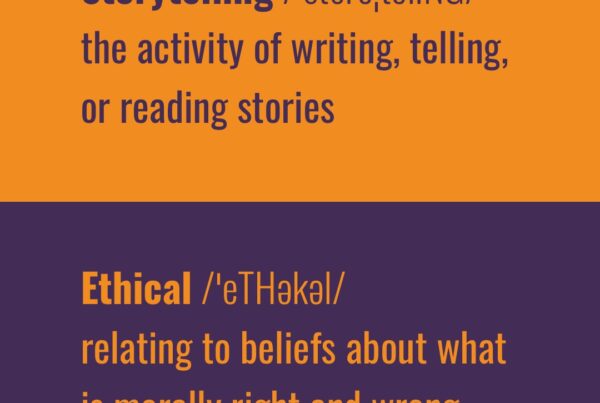Quickly, do you know exactly where your organization is, at this point in the year, in meeting your annual fundraising goals?

Does everyone?
Do you talk about your “growth” budget with your board and your donors? Are you regularly sharing your vision for making a bigger impact and what that will take financially?
Are you basing your annual budget on a small increase over what you raised last year?
Recommendation
Base your fundraising goals on what it actually takes to do your work vs. what you think people will give.
Having a balanced budget throughout the year is key. I agree.
Equally important is helping your community understand there is more to do. And the “more to do” takes more resources. So when you make that 1:1 ask to invite a major gift, or you send the appeal letter, people are ready to give MORE.
Your “money story” is the gap between where you are today in reaching your annual fundraising goals AND your visionary – forward thinking – fundraising goal – vs. the amount you’ve raised so far this year.
Annual funding gap messages and visionary fundraising goals kept private and hidden leave money on the table.
If, to be effective, you MUST become a $1 million or $10 million or $100 million organization – share that vision regularly.
Two Parts to Finding Your Money Story for Your Nonprofit

1. Know the gap between where you are today in reaching your annual fundraising goals vs. what you’ve received from contributions, ticket sales, fees, government, United Way funding, etc.
Only share what’s in the door. Not, what is expected. By sharing what you “expect” to raise you remove any sense of urgency for giving.
2. Know the gap between where you are in reaching your visionary fundraising goal(s) and what your annual budget is today.
Massive fundraising results requires telling the truth.
Calculate your visionary fundraising goal by answering these questions:
• How many people do we say no to?
• Where are cutting to the bone to keep our spending down?
• What should we be doing more of and why?
• And what will all of this cost?
Years ago, before facilitating a board retreat for a hospital foundation I took the tour of the hospital and asked each department head, “What is the best thing about your department? What needs to be replaced in your department? What do you need to do your work better, faster or more safely?”
In less than a ½ day I knew why the hospital was such a quality place. I also knew what the visionary fundraising goal for the foundation should be. . . something the staff and board weren’t even aware of.

Executive and Development Directors who shy away from sharing their money story often feel talking about a large “funding gap” will cause people to think the organization is not run well.
I believe the exact opposite.
I’ve watched, over and over again, as organizations that are transparent about costs, goals, and the impact of a gift create stronger and more committed donors.
Make certain when you share your money story you aren’t being boring. Sharing your money story can be interesting and fun. It’s best to include examples of compelling stories about real people.
Compelling communication shares the impact of what you COULD do more of to help real people. Share exactly where you’re at in the race to reach the goal of helping those people.
Clear communication will generate the results you need.






